THE LEGEND OF THE SLEEPING BEAR
Long ago a great famine had spread over the land. Longingly, a mother bear and two famished cubs walked the shore on the Wisconsin side, gazing wistfully across the great lake at Michigan, which in those days was the land of plenty (as it is today). Finally hunger overcame their timidness and the bears launched out, trying to swim to Michigan. As they got closer and closer to the Michigan shore, the mother's words of encouragement urged on the weary cubs. When only twelve miles from the land of plenty, the mother's heart was rent as she saw a babe sink and drown. With the remaining cub she struggled to gain the beach. Two miles of slow dragging and the second of her beloved cubs also perished.
The mother reached the beach, alone, and crept to a resting place where she lay down
facing the restless waters that covered her lost ones. As she gazed, two beautiful islands
slowly rose to mark the graves of the cubs. The Great Spirit Manitou created two islands
(North and South Manitou Islands) to mark the spot where the cubs disappeared and then
created a solitary dune to represent the faithful mother bear.
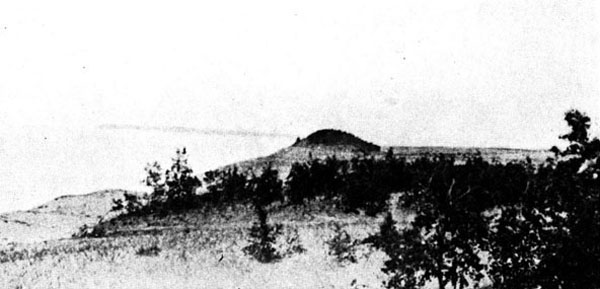
This picture of the Sleeping Bear dune, as it appeared years ago (actual date unknown), shows its
striking resemblance to a sleeping bear. Today, the vegetation in the vicinity has changed
markedly, and the resemblance is less obvious. In particular, trees now block the view
from several angles.
Below is a picture of "the Bear" in the 1800's.
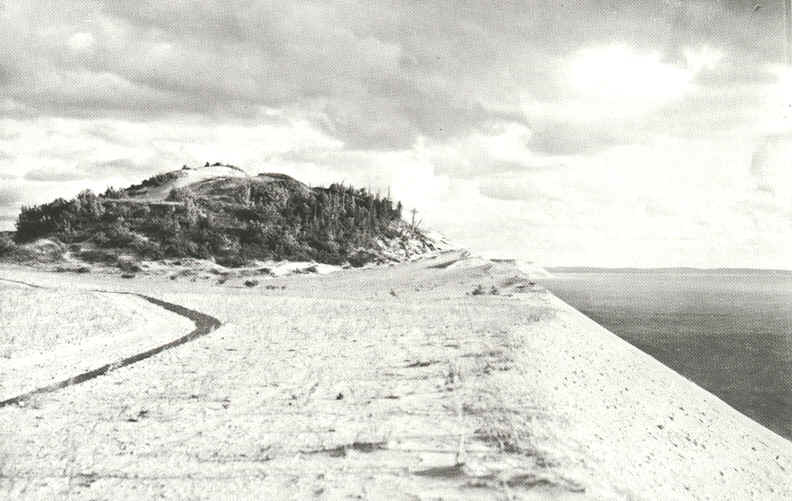
Here's another image of the sleeping bear:
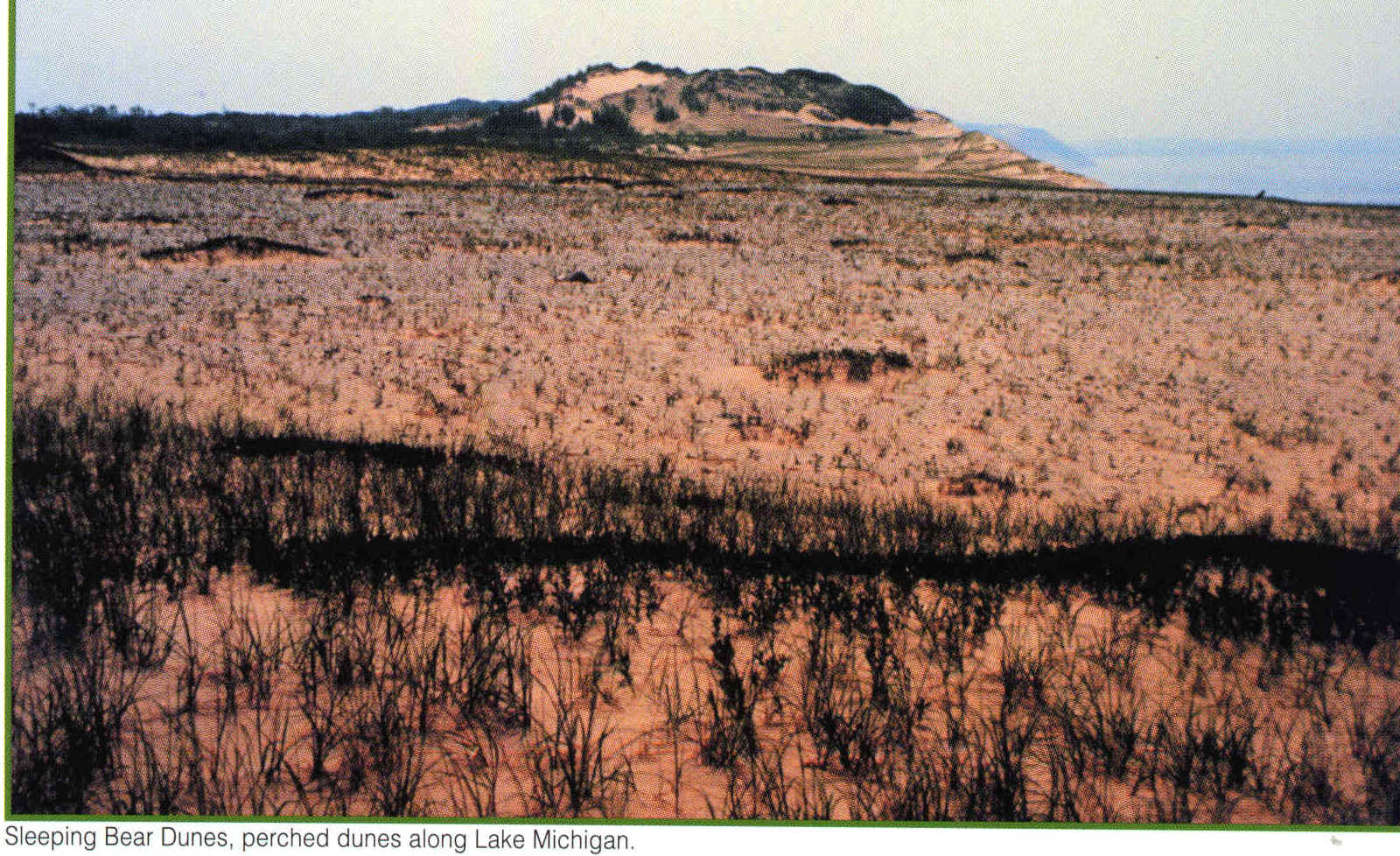
Today the dunes look slightly different, in large part because of fire
suppression which has allowed the grasses to stabilize some of the sandier areas.
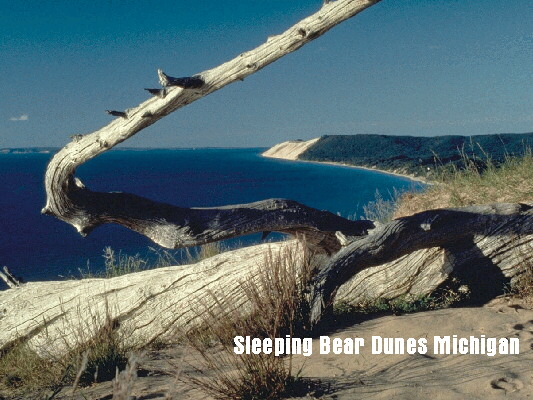
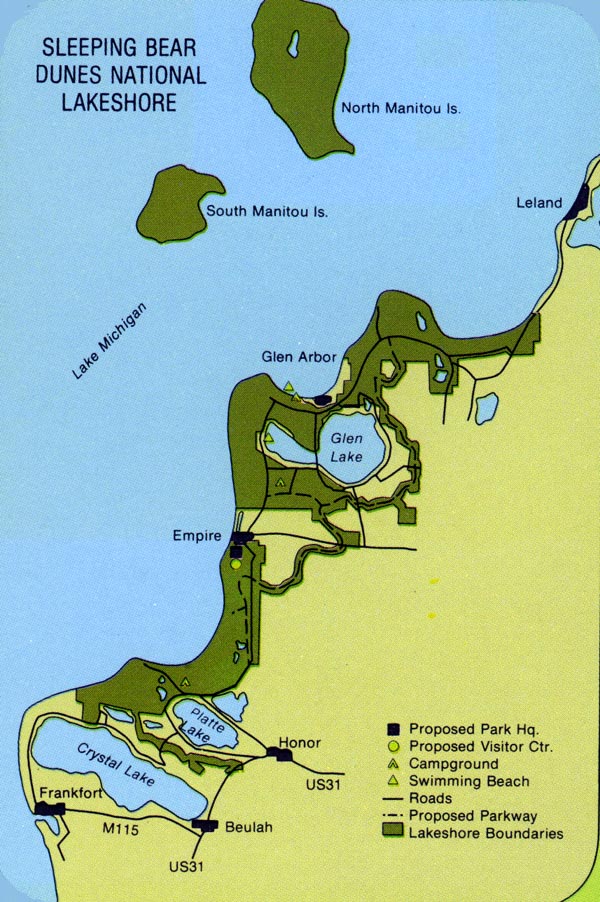
Sleeping Bear Dunes are a type of dune system called "perched dunes". For more information on this type of dune system, go here.
This material has been compiled for educational use only, and may not be reproduced without permission. One copy may be printed for personal use. Please contact Randall Schaetzl (soils@msu.edu) for more information or permissions.